Where To Spot Mako Sharks, The Ocean’s Fastest Predators
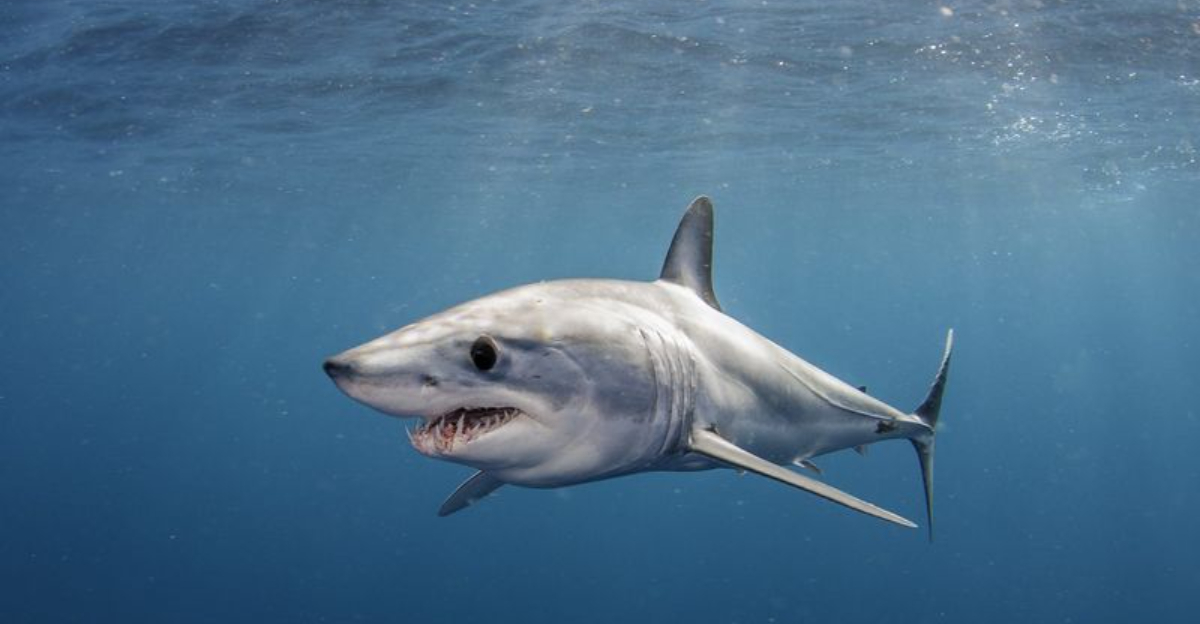
Mako sharks are the cheetahs of the ocean, zooming through water at speeds up to 45 miles per hour. With their sleek bodies and powerful tails, these amazing predators can be found in warm waters around the world.
Whether you’re a shark enthusiast or just curious about these incredible creatures, knowing where to spot makos can turn an ordinary ocean adventure into an unforgettable experience.
1. Meet The Mako Shark: The Ocean’s Fastest And Fiercest Predator
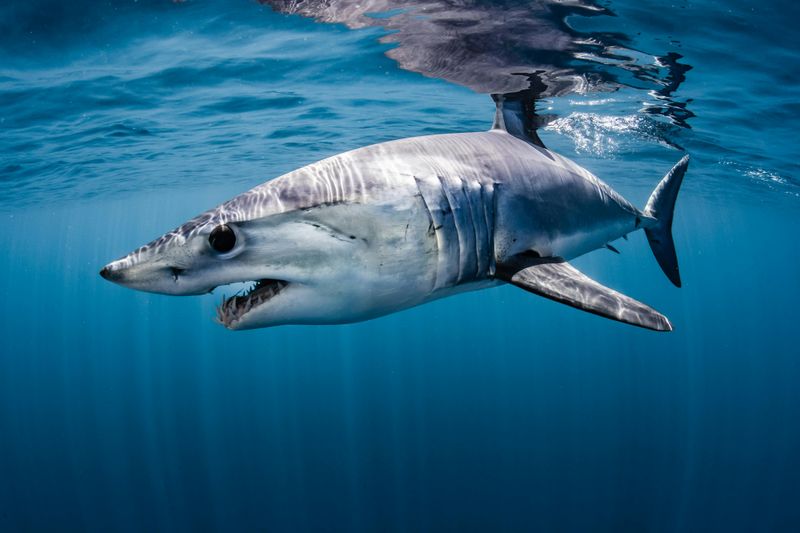
Razor-sharp teeth and metallic blue backs make mako sharks impossible to miss. These torpedo-shaped hunters can reach lengths of 12 feet and weigh up to 1,200 pounds, yet they still accelerate faster than most fish in the sea.
Makos possess unique adaptations like special skin cells that reduce drag in water. Their crescent-shaped tails generate incredible thrust, launching them at speeds few marine creatures can match.
Unlike other sharks, makos maintain a body temperature warmer than the surrounding water, giving them extra energy for those lightning-fast attacks. This rare ability places them among the ocean’s most efficient hunters.
2. Shortfin Vs. Longfin: Exploring The Two Types Of Mako Sharks
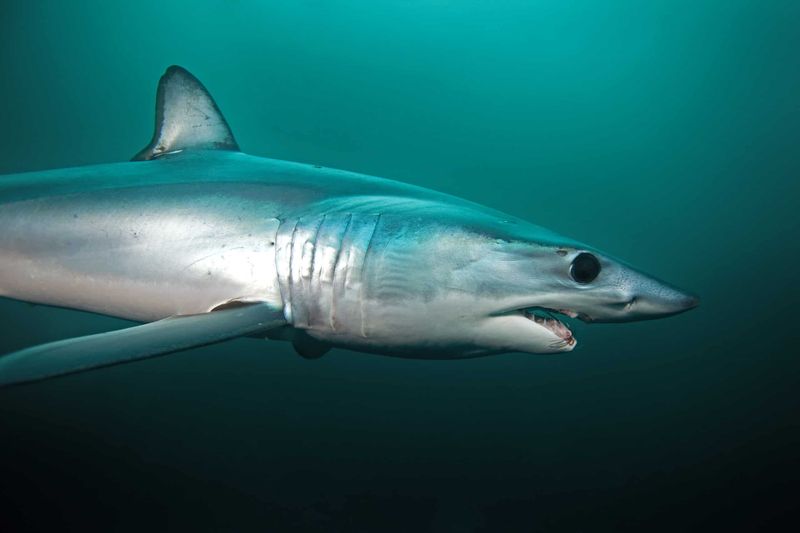
Shortfin makos dominate the headlines with their incredible speed records and widespread presence. They feature shorter pectoral fins, pointed snouts, and that classic torpedo shape perfect for slicing through water at high speeds.
Longfin makos remain mysterious ocean dwellers. Their longer pectoral fins and slightly bulkier bodies make them easier to identify but harder to find in the wild. Scientists have documented far fewer longfin sightings.
Both species share the distinctive mako appearance – metallic blue tops, white bellies, and those intimidating teeth that stick out even when their mouths are closed. Shortfins prefer warmer waters while longfins typically inhabit deeper regions.
3. Mako Sharks In The Wild: Speed Meets Power In The Deep Blue
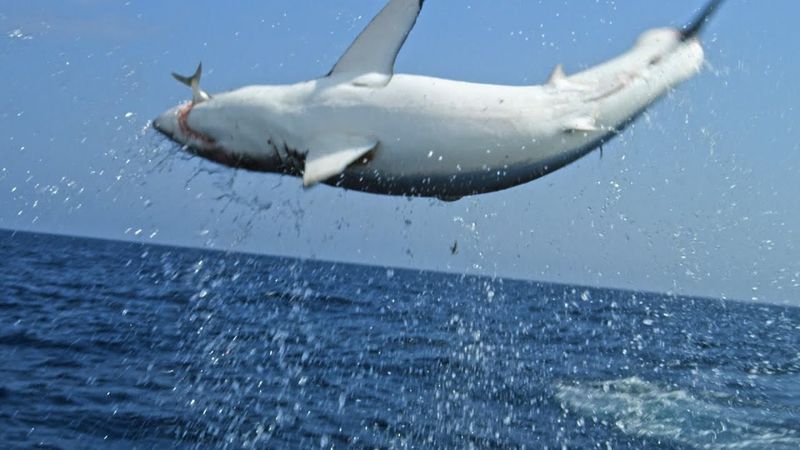
Watching a mako in action feels like witnessing a natural miracle. These sharks don’t just swim – they surge through water with explosive bursts that leave even tuna struggling to escape. Their muscular bodies twist and turn with surprising agility for such powerful creatures.
Makos hunt in open water, often far from shore where they can unleash their full speed. Fishermen sometimes report seeing them leap completely out of water while chasing prey or after being hooked.
Despite their fierce reputation, unprovoked attacks on humans remain extremely rare. Makos typically avoid people unless provoked or confused during a high-speed chase. Their wild nature shines brightest in the open ocean, away from human activity.
4. How Mako Sharks Stay Ahead: Secrets Behind Their Lightning Speed
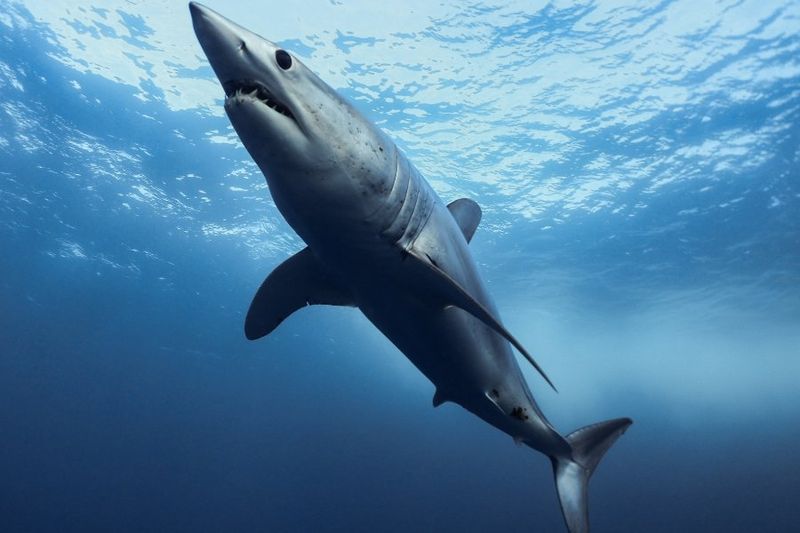
Streamlined bodies give makos their edge – every curve serves a purpose. Their skin contains tiny teeth-like scales called dermal denticles that reduce drag, similar to the technology behind Olympic swimsuits.
A special network of blood vessels called the rete mirabile keeps their swimming muscles warmer than the surrounding water. This rare adaptation among fish provides extra energy for sustained high-speed swimming.
Makos possess large hearts relative to their body size, pumping oxygen-rich blood to powerful muscles. Their crescent-shaped tails generate thrust with minimal effort, while their rigid bodies reduce energy waste. Even their eye muscles are specialized to maintain focus at high speeds – nature’s perfect design for ocean racing.
5. Where To Catch Mako Sharks: The Best Places For Shark Spotting
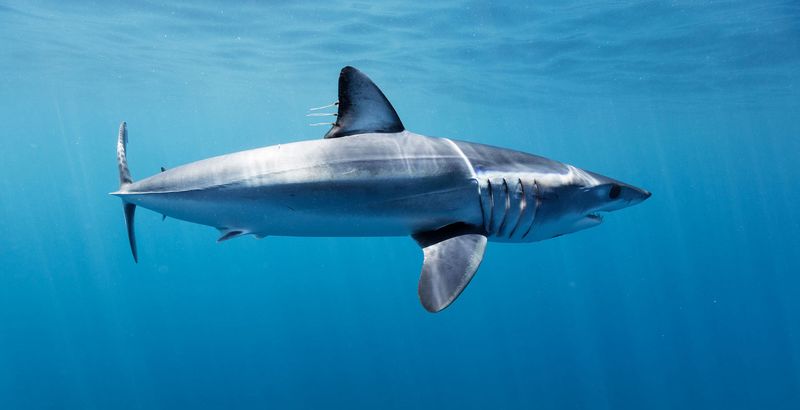
Southern California’s waters host impressive mako populations from late spring through summer. Charter boats operating out of San Diego and Dana Point regularly encounter these speedsters about 15-30 miles offshore where warm currents meet.
New Zealand’s North Island, particularly the Bay of Plenty, offers some of the world’s most reliable mako sightings. Here, clear waters provide excellent visibility for observing natural behaviors between November and April.
The waters off Cape Cod have become increasingly popular for mako spotting during summer months. South Africa’s eastern coastline near Durban also delivers consistent encounters. For Mediterranean adventures, try the waters between Sicily and Malta where makos follow tuna migrations during warm months.
6. Speed Thrills: How Mako Sharks Outrun Their Prey In Ocean Chase
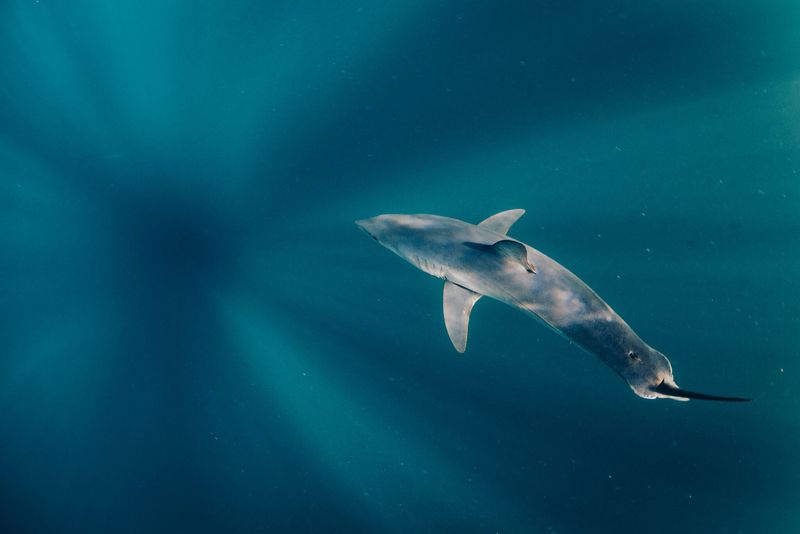
Ambush starts the hunt – makos spot prey from below, then accelerate upward with explosive power. Their initial burst can exceed 45 mph, leaving tuna and swordfish with precious little time to react.
Makos chase in straight lines rather than tight turns. This strategy maximizes their speed advantage while minimizing energy loss. Their exceptional eyesight tracks fast-moving prey even in low light conditions.
When pursuing especially fast prey, makos sometimes breach completely out of water. This aerial shortcut allows them to cut corners during high-speed chases. Their highly developed lateral line system detects even tiny pressure changes in water, helping them anticipate prey movements before they happen – a true underwater superpower.
7. The Mako Shark’s Ultimate Hunting Ground: Exploring Key Locations

Australia’s Great Barrier Reef serves as a seasonal feeding station for makos tracking migrating fish. The reef’s complex ecosystem supports abundant prey species that attract these high-speed hunters during warmer months.
The Gulf Stream off Florida’s east coast creates perfect hunting conditions. This powerful current concentrates baitfish schools, drawing makos into predictable areas where charter operations can locate them reliably from February through May.
Portugal’s Azores archipelago offers perhaps Europe’s best mako encounters. These mid-Atlantic islands sit along major migration routes where deep waters meet shallow banks, creating productive feeding grounds. Spanish waters near the Balearic Islands also host significant mako populations when water temperatures rise above 65°F.
8. On The Hunt: The Mako Shark’s Strategy For Success In The Ocean
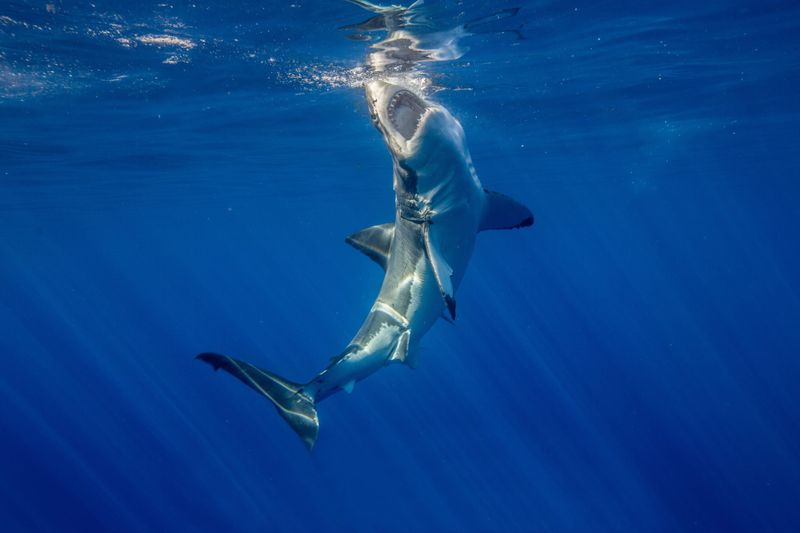
Surprise attacks define mako hunting tactics. Unlike some sharks that slowly stalk prey, makos rely on lightning-quick ambushes from below or behind. Their blue-gray coloration provides perfect camouflage against the open ocean backdrop.
Makos target specific prey zones where currents create natural bottlenecks for traveling fish. They patrol these underwater highways with remarkable patience, conserving energy until the perfect moment arrives.
When attacking, makos often disable larger prey with a swift bite before circling back to finish the meal. Their teeth are perfectly designed for slicing through flesh rather than crushing, allowing them to disable fast-swimming prey with minimal effort. This efficient hunting style helps explain why makos dominate their ecological niche.
9. Tracking Mako Sharks: How They Navigate The Deep Ocean
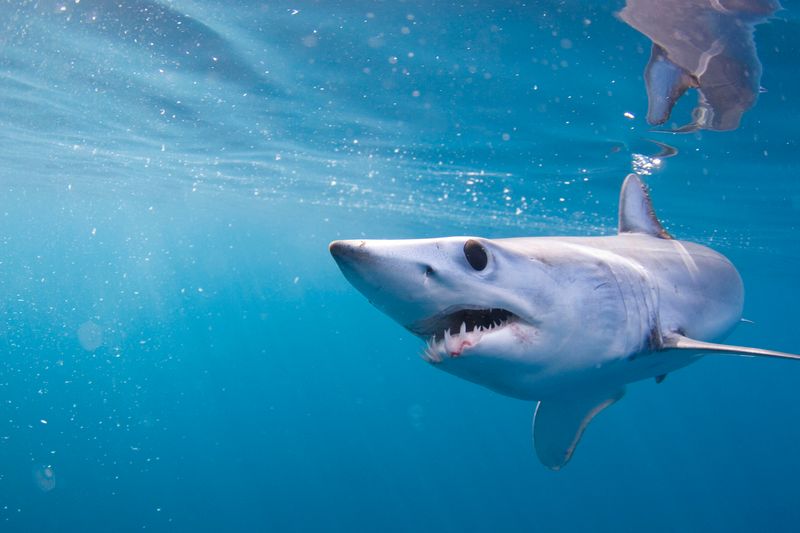
Satellite tagging has revealed makos travel astonishing distances – some individuals migrate over 12,000 miles annually! These journeys often follow predictable patterns linked to water temperature and food availability.
Makos possess an internal compass using Earth’s magnetic field for navigation. This biological GPS helps them return to productive feeding grounds year after year without landmarks to guide them.
Temperature boundaries greatly influence mako movements. They prefer waters between 60-75°F and will travel extensively to stay within this comfort zone. Researchers have documented makos diving beyond 1,500 feet deep, likely following prey or regulating body temperature. Their incredible navigation abilities make them true ocean wanderers, connecting distant marine ecosystems through their travels.
10. The Mako’s Signature Move: Why Speed Makes All The Difference

Vertical attacks showcase the mako’s most spectacular hunting technique. They accelerate from depths directly upward, sometimes launching completely out of water with prey in their jaws. This unique approach overwhelms even the fastest fish.
Speed creates hunting opportunities unavailable to slower predators. Makos can overtake tuna and swordfish – themselves considered ocean speedsters – in straight-line pursuits.
Their velocity generates impact force when striking prey. The combination of speed and 30+ razor-sharp teeth creates devastating initial damage. Makos maintain their energy advantage through specialized muscles that retain heat better than other sharks. When food becomes scarce, this speed advantage allows them to expand their hunting range quickly, traveling over 60 miles daily.
11. Under The Radar: Hidden Spots Where Mako Sharks Thrive
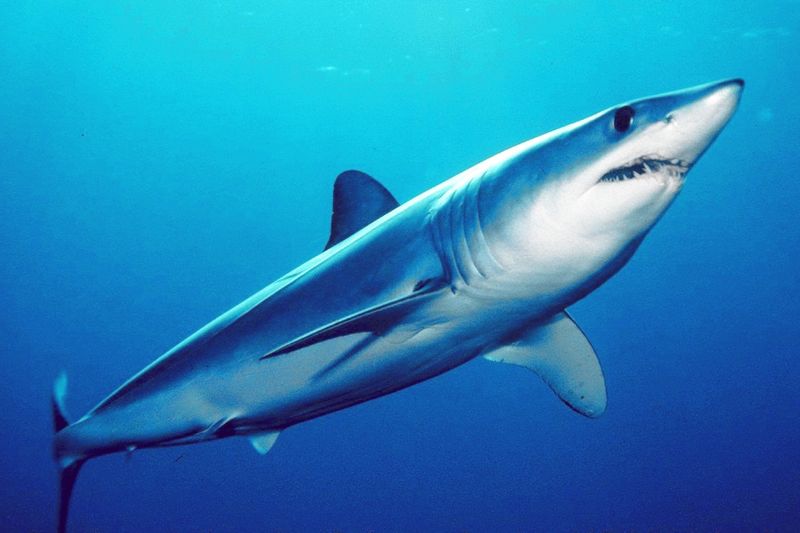
Japan’s Izu Peninsula harbors a little-known mako hotspot. Local fishermen have long encountered these speedsters in offshore waters, especially where warm Kuroshio Current meets cooler coastal flows.
Chile’s central coast near Valparaíso supports healthy mako populations year-round. The deep Humboldt Trench provides cool upwellings rich in nutrients that attract diverse prey species.
Mexico’s Sea of Cortez hides juvenile mako nursery areas in its northern reaches. These protected waters offer young sharks abundant food with fewer predators. The Canary Islands off northwest Africa represent another overlooked region where makos congregate along underwater seamounts. These volcanic structures create upwellings that concentrate food sources, drawing makos from miles around.
12. The Mako’s World: A Look At The Life Of The Ocean’s Fastest Shark
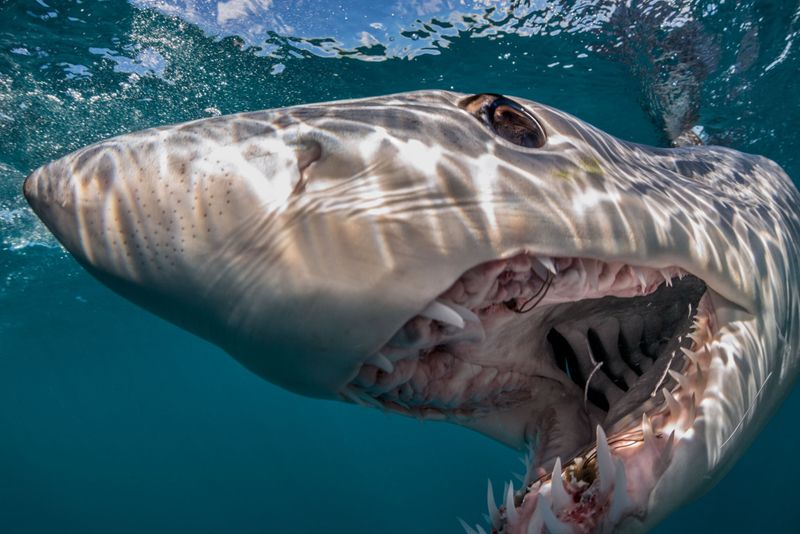
Female makos give birth to live young after a 15-18 month pregnancy – one of the longest gestation periods among sharks. Pups emerge fully formed at about 2 feet long, immediately independent and capable of hunting small fish.
Makos typically live 25-30 years in the wild. They grow continuously throughout life, with females generally reaching larger sizes than males. Their diet evolves as they mature, starting with smaller fish and eventually targeting tuna, swordfish, and even other sharks.
Social dynamics remain largely mysterious. While generally solitary, makos occasionally gather in loose groups when food is abundant. They show remarkable intelligence in captivity, quickly learning patterns and demonstrating problem-solving abilities that surprise researchers studying their behavior.
13. Faster Than The Rest: What Makes The Mako Shark A True Ocean Speedster

Makos boast the highest power-to-weight ratio of any shark species. Their bodies contain up to 30% more red muscle tissue than other sharks, providing sustained energy for high-speed swimming without quick fatigue.
Their unique tail design generates maximum thrust with minimal resistance. Unlike other sharks with more flexible bodies, makos maintain rigid posture during high-speed runs, reducing energy waste from excessive movement.
Blood circulation systems in makos operate at higher efficiency than other sharks. Oxygen delivery to muscles happens faster, allowing for immediate power when needed. Their sleek bodies feature a tapering design that reduces turbulence around their fins. Even their skin chemistry differs from other sharks, with specialized compounds that may further reduce drag in water.






